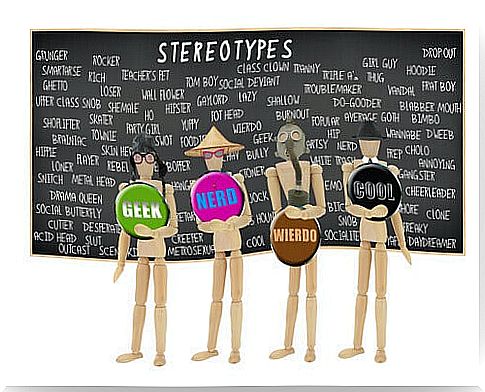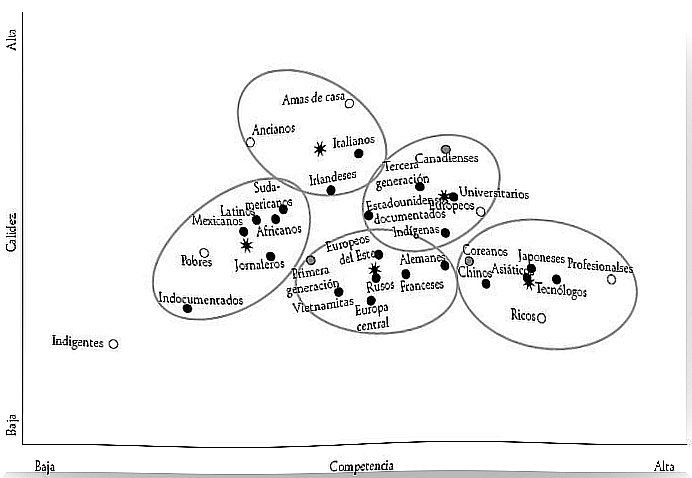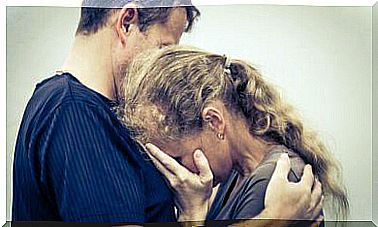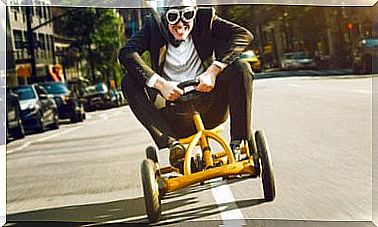The Content Of The Stereotype: Sociability And Competition

The stereotypes that we maintain are closely associated with the image we have of the groups. A simplified image, with few details. We use this image to value all members of the same group equally and it serves to justify certain behaviors. Although each stereotype is different and is made up of different traits. In addition, the stereotype usually includes two characteristics: sociability and competition.
Some common stereotypes are that Spaniards love to party and flamenco. Although a good nap is also necessary. Italians are gangsters and all Latinos know how to dance very well. Like, all Arabs are terrorists and Asians are all the same. Not forgetting that women would be warmer and more sensitive than men. These and many others are very popular stereotypes.

The content of the stereotype
The stereotype content model postulates that all group stereotypes are formed in two dimensions: sociability and competence. The model is based on the notion that people are evolutionarily predisposed to evaluate, first, the intentions of strangers, whether to hurt or to help (dimension of sociability, although it is also known as warmth) and, secondly , to judge the ability of the stranger to act on that perceived intention (dimension of competence).
In this way, the groups with which you are competing are attributed little sociability and are treated with hostility or disdain. On the other hand, social groups and individuals with high social status (eg, economically or educationally successful) are considered very competent. Thus, when there is no threat, they are considered sociable while status symbols will determine competition.
Sociability and competition dimensions
The stereotype content model, as seen, has two dimensions (sociability and competence) in which the different groups are evaluated. In this way, groups and their members can score higher or lower in each dimension, giving rise to four conditions. Let’s look at the dimensions separately:
- Sociability : sociability is essential since it will determine relationships. If a person is considered to have little sociability, it is unlikely that we will try to relate to him. As has been seen, sociability (perceived) will depend in part on the degree of threat it represents. Sociability also has a component of morality. A more sociable person is considered. generally more moral.
- Competence : those with high status are judged more competent than those with low status. However, this dimension is less important than sociability.

Behaviors and emotions according to the content of the stereotype
To this model of stereotypes formed by sociability and competition, behaviors and emotions were added that corresponded to each of the dimensions that made up the model. In this way, those who were considered high in sociability and competence were considered more likely to arouse admiration. On the other hand, those who are judged as high in sociability and low in competition are more likely to receive paternalistic treatment. For example, the elderly.
On the other side are those who are seen as not very sociable and with high competition. They would arouse envy and would be the perfect candidates to be used as scapegoats when things go wrong. Some groups that have historically been labeled in this way are Jews, Asians, and feminists. Finally, the low in sociability and competition would provoke contempt and the action towards them is rejection, dehumanization. Commonly in this group are the homeless.
In this way we group the different social groups and their members. Obviously, the groups that are the worst unemployed are those that are considered low in both competition and sociability. Social studies tell us that people in these groups try to avoid them. In opposition, those high in sociability and competence are usually the members of our group, ours. In part, hence the group favoritism or endogroup bias.









